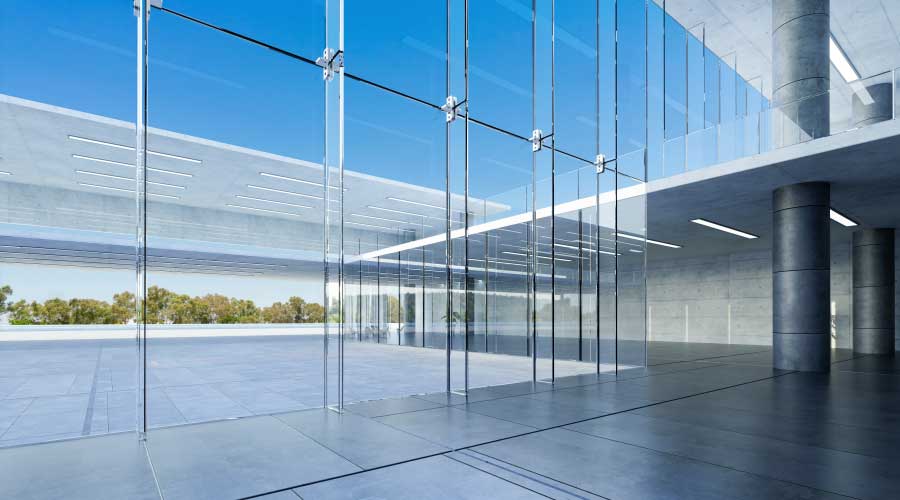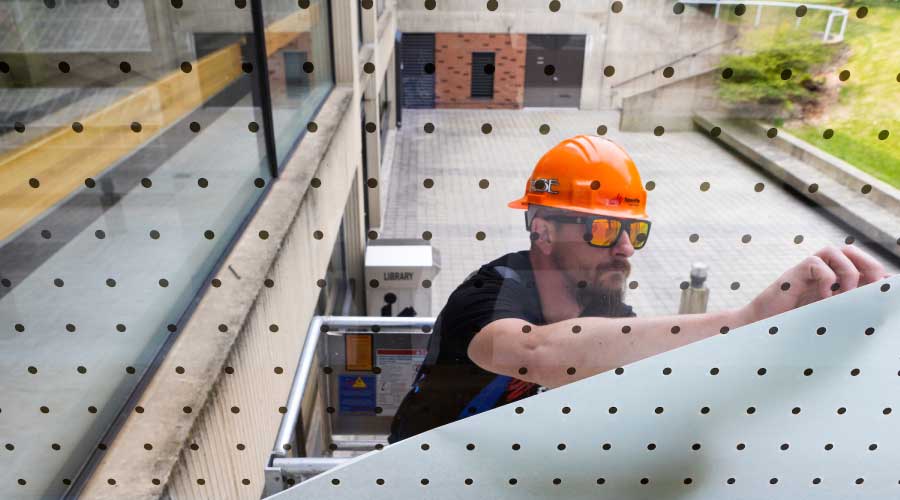Materials on Roof Surface Can Build Energy Efficiency
In addition to thermal capacity, roof systems can offer energy efficiency at the surface of the membrane material. It is possible to reduce a roof’s solar heat gain by applying reflective, emissive materials that reflect the sun’s radiant energy back toward the sky.
Proper reflective surfacing can cool roofs even in cooler climates. Studies have indicated that white roofs are better at cooling the building than black roofs, even in colder climates. Reflective surfaced roofs can reduce surface temperature by as much as 30 percent and can extend the service life of some membrane systems by reducing expansion and contraction. Studies have indicated that reflective surfaces will cool the building in the summer, decreasing the use of air conditioning and, in turn, cooling costs and energy capacity. Reflective roofs in conjunction with other specialized roof components can also increase interior ambient light, reducing yearly electricity costs.
Reflectivity ratings are based on the ability of roof surfaces to reflect the sun’s ultraviolet rays. The Energy Star program establishes the reflectivity rate of a roof surface for low—slope (less than 2:12) roof systems must be greater than or equal to .65 the first three years and .50 after three years. The LEED rating system adopted Energy Star standards and provides points based on the application of reflective roof surfaces.
Reflectivity rates are not general code requirements, but some states and municipalities have implemented them into local codes.
Reflectivity keeps heat from entering a building; emissivity allows roofing materials to release absorbed heat. Surface emissivity is generally measured as a number between 0 and 1, with a higher emissivity meaning more energy is radiated away from a building. LEED specifies an emissivity rating for roofing at a minimum of .90 based on ASTM E 408. Emissivity rates in roof systems are achieved through proper membrane materials and insulation.
The roofing industry continues to debate reflectivity and emissivity. A proper energy—efficient roof design will be one that provides for proper levels of both. The notion that one element is more important than the other in certain temperate regional zones is incorrect; energy savings can be generated through proper reflectivity and emissivity in all parts of the country.
Concerns have been raised, with some validity, about the potential for condensation occurring within the roof system when lighter color membranes are applied in the winter months in colder climates. Insulation can reduce emissivity loss, but it can also contribute to condensation. Proper research should be conducted before installing insulation on the roof system. It is recommended that a dew—point calculation be conducted based on a building’s interior use to determine the correct thermal LTTR value before application.
The reduction of energy is a paramount concern. Energy efficiency will determine further the materials and application procedures used at building envelopes in the future. Facility managers must be aware of these changes and become acquainted with these technologies to succeed at creating high—performance buildings.
John D’Annunzio, president of Paragon Consultants and Paragon Roofing Technology, Inc., has published three books about roofing.
Related Topics:












